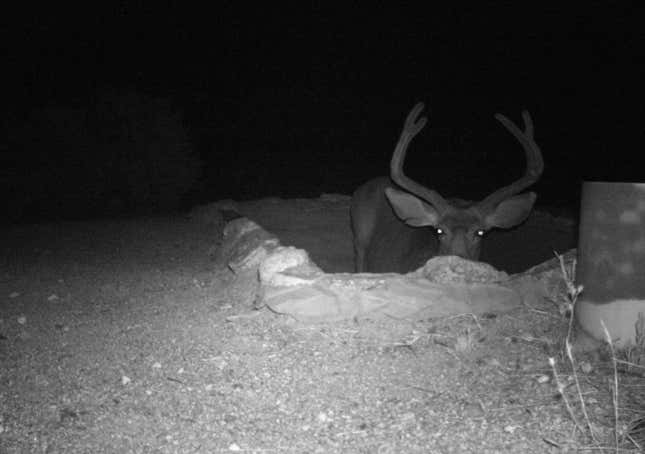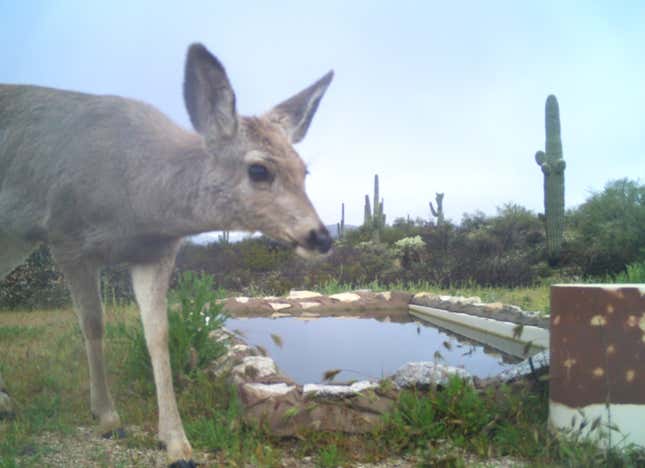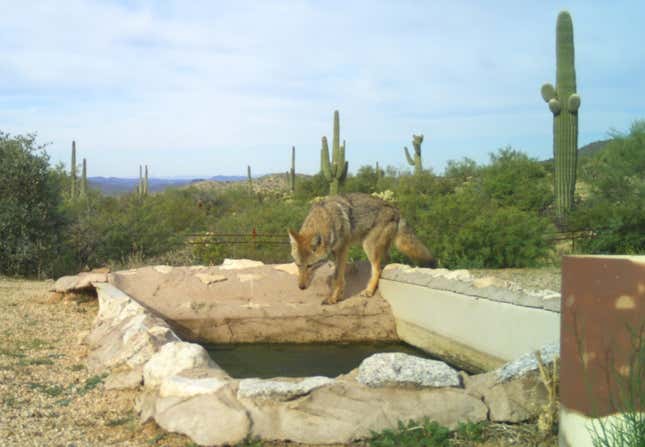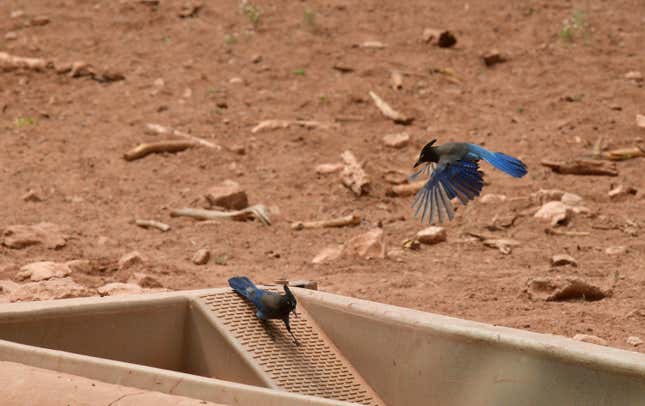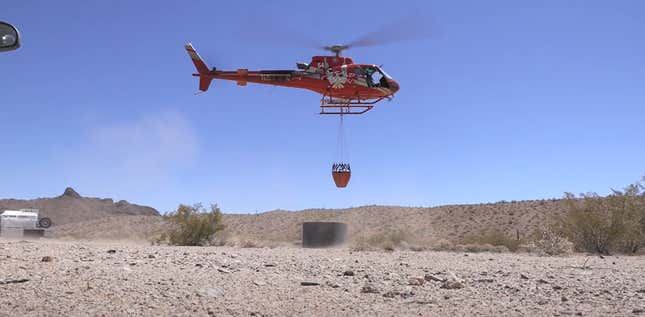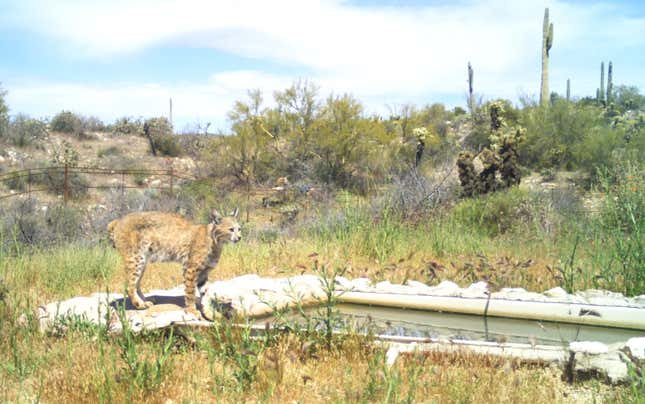
In the Southwest, if you happen across a tank of water in the desert, don’t disturb it. The tanks are meant for bears, deer, birds, and other wildlife—and they’re more in need of the water than ever this year amid the megadrought.
The Arizona Game and Fish Department has been putting out water catchments for wildlife during the hot summer months for the past 75 years. But last year, AZGFD said they hit a new record: They put out 2.4 million gallons of water throughout the entire year. This year, AZGFD says it’s on track to put out around 3 million gallons by the end of this year. The agency started hauling water for the 3,000 catchments around the state started in April. (A third of those catchments are owned by AZGFD, and they also operate catchments owned by the Bureau of Land Management and Forest Service.)
While you should give the tanks a wide berth and let animals drink in peace, the agency has set up camera traps and occasionally dispatched photographers to capture the wildlife getting a glug of water in the parched desert. The images show a who’s who of the animal world from small birds to apex predators.
